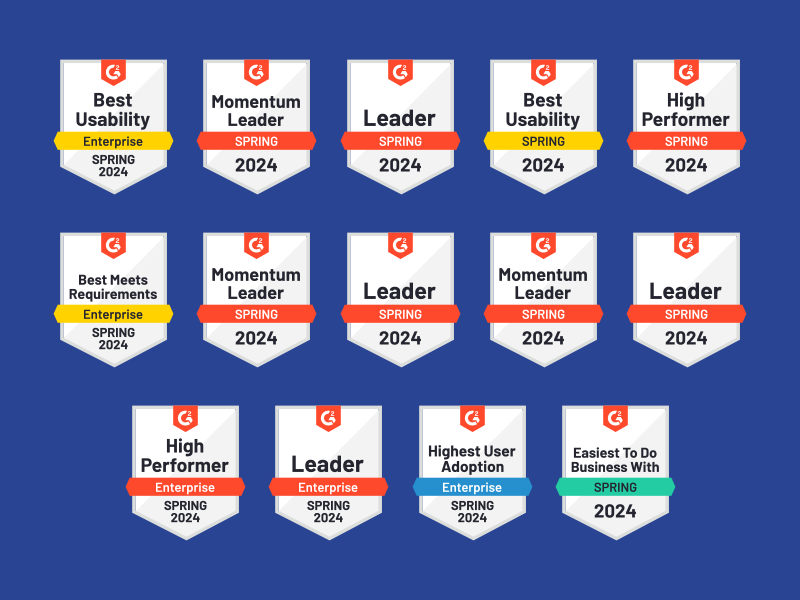HR data is a rapidly evolving field. We can now track workplace trends and issues that weren’t even a thought in our minds twenty years ago. We can even use predictive models to alert us to employees who are thinking about leaving before they resign. Despite the potential, the availability of data and tech can be overwhelming.
Why do organizations collect HR data and how are they making the most of it? HR Acuity asked, and the answers may help you direct your own company’s efforts. You can view the full report here.
What Types of HR Data Should You Track?
You can track just about everything, but you don’t want data overload. In employee relations, 100 percent of responding companies said that they track the type of offense (harassment, discrimination, etc.), but only 73 percent track how the investigation turned out (that is, whether the claim was substantiated or unsubstantiated).
It may not seem as important to run a report on the latter, but how you approach your next round of training should be strongly influenced by previous investigations. If you have a high percentage of unsubstantiated cases, you an overly sensitive workforce. If you have a high percentage of substantiated cases, you an overly offensive workforce.
Other areas organizations track include:
- 85% issues by location
- 68% trends over time
- 66% time to close
- 65% remedial action taken
All of these data points are helpful to your business. If you want to see how successful a workplace training program was, tracking how your harassment claims changed after the workshop could give you the information you need. If your cases dropped (or even if the level of seriousness fell), you have hard evidence of a great return on your training investment. Remember, the C-suite likes to speak about dollars — and having the right numbers can help you make your case.
Integrating Your Data
You have available (or should have!) an HR system that contains information about employees — everything from age to race to education to time in position. If you tie your employee relations data to your HRIS, you can run reports on just about anything. And with those reports, You can look for trends in the data, identify problem departments and see where your problems lie.
However, most companies don’t integrate this data. Only 44 percent of companies tie this information into their demographic information, 40 percent match it up against performance ratings, and 19 percent don’t integrate at all. Think of the power you’re losing if you don’t integrate your data! If a department has high turnover and a high number of reported problems, this tells you that you have a serious management issue — even if the department head wasn’t the instigator in any case.
Storing Your Data
Your HR data is only as good as your storage systems. If people can’t access it when needed, it might as well not exist. Additionally, you want to ensure tight security around your data. The most popular method for employee relations data storage is a Case Management System (42 percent), followed by a combination method (37 percent) and then a shared drive (12 percent). Remember, you’ll get more robust data if your employee relations data is connected to your employment data.
Choosing Your System
There are many HR systems to choose from, but it can be helpful to know what other people are using to manage their employee relations data.
We found that:
- 27% use HR Acuity
- 21% use Navex
- 9% use Salesforce
- 9% use ServiceNow
- 6% have no system
- 4% use iSight
- 3% use Laborsoft
As you can see, the numbers here don’t add up to 100 percent, which means many companies are using smaller platforms or a mish-mash of systems. Remember, data that you can’t easily retrieve and analyze isn’t as valuable as data that you can.
What Are You Doing with Your Data and Metrics?
Sixty-one percent of companies use their data to help drive initiatives and gain insights, and 49 percent use it to create better employee relation policies. Both are fantastic uses of data. What’s shocking is that 27 percent of companies report gathering the data, but are not really using it.
This is a waste of great data! Your data really can make a difference for your business, if you pay attention to it. You can learn what works and what does not, who needs better training and which departments are generally awesome. Don’t make the mistake of ignoring the information.
Don’t forget, you need to share your HR data with decision makers. Right now, only 22% of companies report data to the board and 59% to the C-suite. Those numbers should be 100 percent.
If HR wants to show their value to the organization, they need to learn to talk about what they do and how their efforts help the business. Great employee relations is critical to company success, and senior executives need to know what is going on.
Do you collect employee relations data? Do you use it to make a difference? If the answer to either of these questions is no, it’s time to rethink your employee relations data.
Ready to equip yourself with the data to discover patterns, identify trends and proactively manage risk? Schedule a demo!



